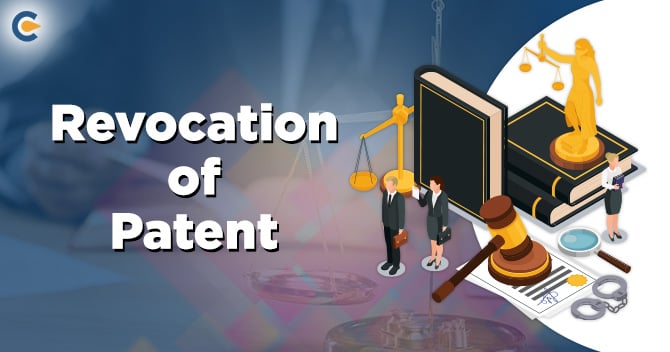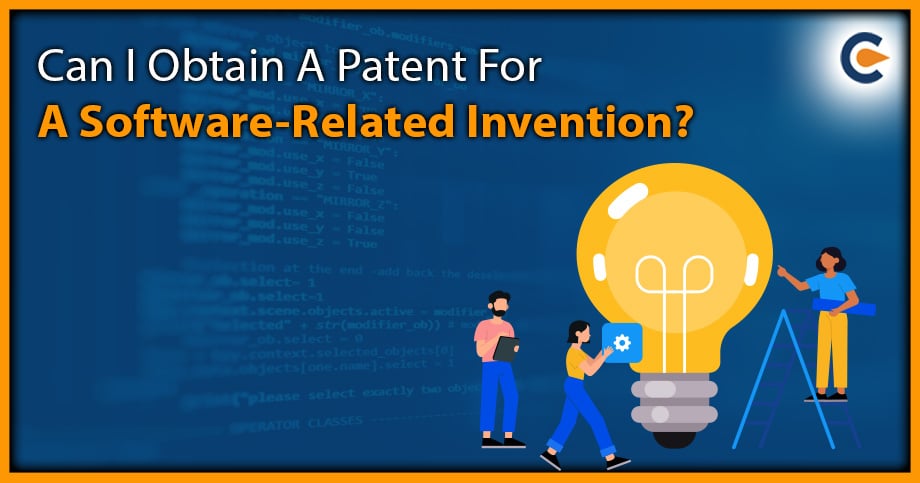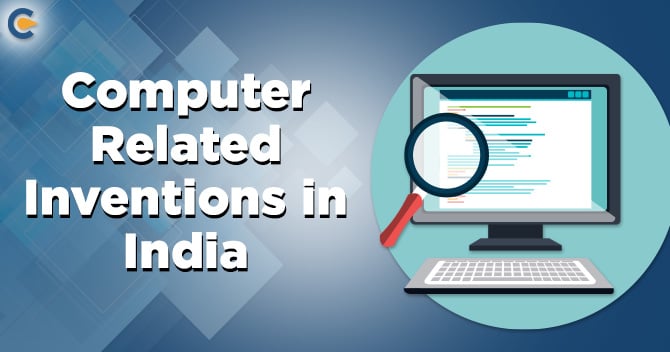With the signing of the TRIPS agreement in 2005, the Indian Patent Act, 1970 was amended. The amendment was made in Section 25 of the Indian Patent Act, 1970, and the ability to oppose after or before the grant of Patent was included in the Act. The amendment in the Act, ensured proper adoption of Intellectual Property and international harmonization of the Patent regime. The Revocation of Patent is done in the cases where it is deemed to be against the public policy of the Central Government or Patent Infringement or Claim by Licensors. In this article, we will discuss the Revocation of Patent in India.
What is a Patent?
A Patent is a title that provides the owner with an exclusive right to prevent other people from misusing the invention of the owner, which is mentioned in the Patent. Patent gives the right to exclude other people from using, selling, or importing the patented invention of the owner.
A Patent, when approved, does not infer that the same will stay unopposed by any party during its lifetime. In spite of approving of a Patent, it can be put to trial by any person on numerous grounds, either by way of revocation proceedings or through a post-grant opposition.
A Patent is granted for a definite field in a defined country and only for a maximum of 20 years. Patent will only be granted in the name of the owner of the invention of the owner does the full revelation of the invention and publication of the technical facts of the invention.
A Patent is basically an agreement between an originator and the Government in which the originator is given a short-term control in return for allowing the invention to be made public to aid in the advancement of the general people’s knowledge.
The legislation which deals with the Patent Registration and Protection in India is The Patent Act, 1970, and The Patent Rules, 2003. The Patent Act, 1970, has undergone certain amendments in the years 1999, 2002, and 2005. In the year 2005, an amendment was introduced related to the Protection of Product Patent for pharma, food, and chemical inventions.
In India to qualify for a Patent, an invention or a product has to satisfy the following criteria:
- The invention should be unknown to the public.
- The invention must have a feature different from any previous invention.
- The invention is considered useful.
- The originality of the invention should not be obvious to any person who has some knowledge of the area related to the invention.
What is Revocation of Patent?
A Patent when is sealed or granted, it is not always the case that the Patent should stay unobstructed by any person or third party throughout the life of the Patent. Certain people can challenge the Patent on several grounds, and the way by which the Patent can be challenged is by Revocation of Patent.
The Patent Act does not assume that the Patents granted to be valid; hence, the rights granted on such granted Patents cannot be absolute. The third parties which are required to seek consent from Patentee of the granted Patent for practicing of any exclusive rights bestowed upon him/her are also given an opportunity to challenge the validity of the Patents.
Section 64 of the Patent Act, 1970[1], does not restrict the grounds of Patent Revocation to only those provided in Section 64, whereas section 25 (2) also set out grounds that are used in post-grant opposition proceedings is restrictive in nature. Hence, it can be said that Section 64 is not exhaustive.
Who can file for the Revocation of Patent Petition?
The Patent Act, 1970, in Section 64 provides for the persons who can file the petition of Revocation of Patent. The persons are as follows:
- any interested person;
- the Central Government;
- the person is making the counter-claim for the infringement of a patent in a suit.
Where can a Revocation of Patent Petition be filed?
A petition for the Revocation of Patent should be filed in the Intellectual Property Appellate Board (IAPB) by any of the persons specified under section 64 of the Patent Act, 1970. As per Section 104 of the Patent Act, 1970, provides for the jurisdiction aspect for filing of the Revocation of Patent petition.
Section 104 states that the Revocation petition claiming Infringement of Patent should not be filed in any court, which is inferior to District Court having the jurisdiction to try the Infringement suit. On the other hand, in case of a counter-claim is filed for the Revocation of Patent made by the defendant, such counter-claim or suit for Patent Infringement should be transferred to the High Court.
Read our article:Penalties, Suits and Appeals Against the Patent Infringement
What are the grounds for the Revocation of Patent?
The grounds for Revocation are provided under the following sections of the Patent Act, 1970:


Section 64-Grounds for Revocation of Patent
The various grounds for Revocation of Patent as per section 64 of the Patent Act, 1970, are as follows:
- An invention with similar specifications in any other Patent already granted in India with an earlier filing date or priority date;
- The grant of Patent was done to a person who was not entitled for the same;
- The Patent was wrongfully obtained by a person from another person who is actually entitled to the same. Another person who is actually entitled to the Patent can apply for Revocation of Patent;
- The invention which is claimed in the granted Patent is not actual as per Section 2(1)(j) of the Patent Act, 1970;
- In the Patent the invention claimed lacked in novelty with regard to prior public use or prior knowledge;
- The invention is not of any usage, means that the Patent is not in operation at all or is not providing the desired results as specified in the specifications of Patent;
- In the Patent the invention is obvious with regard to prior public use or prior knowledge;
- The Patent lack any inventive step;
- The claimed invention does not take account of any personal document or secret use or secret trail;
- The claimed invention which is imported from abroad is not new in the country India. The invention is publicly known and is in use in India before the date of publication or priority date.
- The scope of any claim of a Patent is not clearly or sufficiently defined in the specifications of the Patent;
- The claim of Patent is not fairly based on the matters of the specifications of Patent;
- The specification of the Patent does not fairly or sufficiently describe the Patent or the methods by which the Patent is invented;
- The Patent was obtained by false representation or suggestion. The suggestion or representation should relate to any fact or statement made in connection with the grant of Patent or relate to any of the specifications of the Patent;
- The Patented invention claimed to fall under Section 3 or Section 4 of the Patent Act, 1970. Section 3 states the categories under which the invention if lies are not patentable in India. On the other hand, Section 4 states that any invention related to atomic energy is not patentable in India;
- The applicant of the Patent has not disclosed all the required information as per Section 8 of the Patent Act, 1970. Furthermore, the applicant has furnished false information related to the invention;
- The applicant of the Patent has not followed the compliance of the secrecy direction by the Controller as per Section 35 of the Patent Act, 1970;
- Non-compliance of the secrecy direction by the Controller for filing of Patent application outside India without the prior permission of the Controller;
- The permission for amendment of complete specifications of Patent under Section 57 or Section 58 of the Patent Act, 1970, is obtained by applicant by fraud;
- The specification of the Patent does not completely disclose properly the geographical origin or source of the biological material used in the invention;
- The claimed invention in the specification of Patent is a traditional knowledge available within any local or indigenous community in India or elsewhere.
In the judgment of the case, Dr. Aloys Wobben & Anr. vs. Yogesh Mehra & Ors, the Supreme Court (SC) has explained that as per Section 64 of the Patent Act, 1970, Patent Revocation can be sought either by filing a Revocation petition to the Intellectual property Appellate Board (IPAB) or by a counter-claim in a suit of Patent Infringement. The challenger of Patent Revocation cannot attempt to proceed simultaneously against the Patent holder in both the matters. The attempt to seek one of the remedies by the Court will bar the challenger from availing the other remedy.
Section 65-Revocation in cases related to Atomic Energy
Section 65 of the Patent Act 1970, provides that the Revocation of Patent can be done by the Central Government. The Central Government can revoke the Patent only after may revoke a Patent after establishing that the invention specified in the Patent is related to Atomic Energy. The grant of Patent for an invention on Atomic Energy is restricted as per the provisions of the Atomic Energy Act, 1962. Hence, the Central Government cannot allow the grant of Patent for an invention related to Atomic Energy in India.
In the case of Enercon (India) Ltd and Ors. vs. Enercon Gmbh [(2014) 5 SCC 1], the Supreme Court laid down the fact that when post-grant opposition proceedings are instituted by a party in the Court related to a Patent, then the same party cannot institute a petition of Patent Revocation or counter-claim of Patent Revocation proceeding against the same Patent simultaneously.
Section 66-Revocation of Patent in Public Interest
Section 66 of the Patent Act, 1970, states that where the Central Government is of the opinion that the Patent or the manner in which the rights related to Patent are exercised Is disadvantageous to the public at large or the State, then such a detrimental Patent should be revoked. The Patent holder should be given proper opportunity with respect to his/her right of being heard. After the opportunity is given to the Patent holder and observing all the circumstances, the decision for the Revocation of Patent will be given accordingly.
For example, Company Avesthagen Ltd. was granted a Patent on a product containing Jamun, Chandan, and Lavangpatti, which was anticipated to be used in for the treatment of diabetes. The Company Avesthagen filed for Patent for the same product in the European Patent Office (EPO). The Patent was turned down under the ground that the Patent is infringed upon the Traditional Knowledge Digital Library (TKDL).
The Central Government of India, on finding out about the filing of Patent in EPO, revoked the Patent granted to the company Avesthagen by the Indian Patent Office under Section 66 of the Indian Patents Act. The ground of rejection was that the Patent is detrimental to the public interest at large and is also mischievous.
The company Avesthagen argument that though it was traditional knowledge, but the circumstance that when the plants are used in the particular combination specified in Patent, the plants show a faster effect. On the other hand, the Central Government argued and proved that the fact that these plants specified in the specifications of Patent are used for the management of diabetes for a very long period and was known to the public at large for centuries. The Central Government stated that it is very obvious that the extracts plants will perform the same function. Hence, the Court held that the grant of Patent could not be done just for re-validating a traditional knowledge.
Section 85-Revocation by Controller for Non-working
As per Section 85 of the Patents Act, 1970, the Patent can be revoked for non-working. Any person interested or the Government can apply for the Revocation of Patent to the Controller with respect to the Patent for which compulsory license is granted. The Patent Revocation should be filed within two years of the grant of the compulsory license.
The grounds for Revocation are:
- The invention which is patented is not working the territory of India;
- The reasonable requirements of the common public from the Patent is not being met;
- The invention which is patented is not available to the common public at a reasonable, affordable price.
The application made by any person or the Government should be made in Form 19 along with the evidences supporting the Revocation. The application if is made by a person interested, so such an interested person should disclose the nature of his/her interest.
Conclusion
It’s common for some people to come across to a matter of Patent Revocation with a general concern that ‘this has been done earlier’ or ‘the Patent doesn’t operate.’ These are certain aspects to be taken into account when considering the various grounds of Patent Revocation. Several of the grounds for Patent Revocation involve complex scrutiny at a legal and practical level (within the field of the invention defined in the Patent). In the end, it will be the Court that decides whether or not a Patent is liable for Revocation with the support of evidence presented by the parties. If you think that there are sufficient grounds for Revocation of Patent available, then legal advice should be taken from experienced professionals. We at Corpbiz have experts who will help you with the process of Patent Revocation. Our experts will guide you with the process of Revocation. Our experts will ensure the successful and timely completion of your work.
Read our article:Patent in India: Registration and Filing Process











